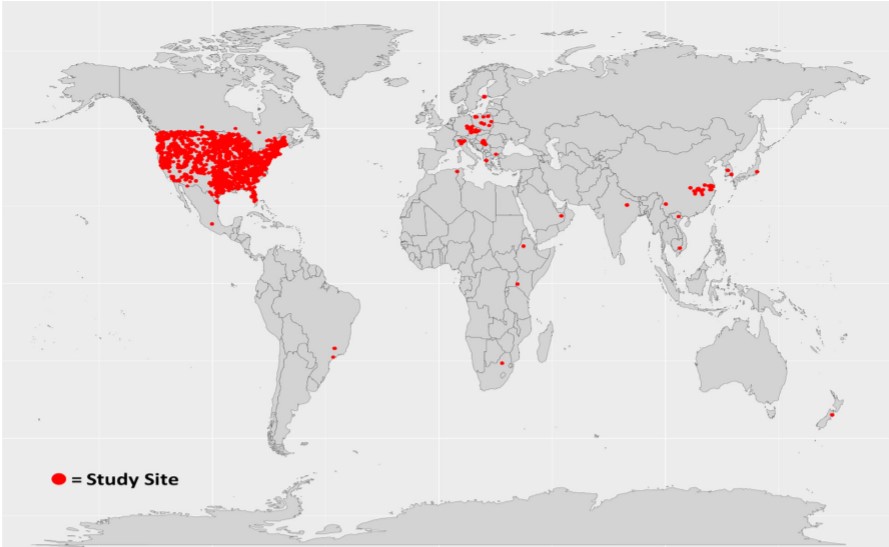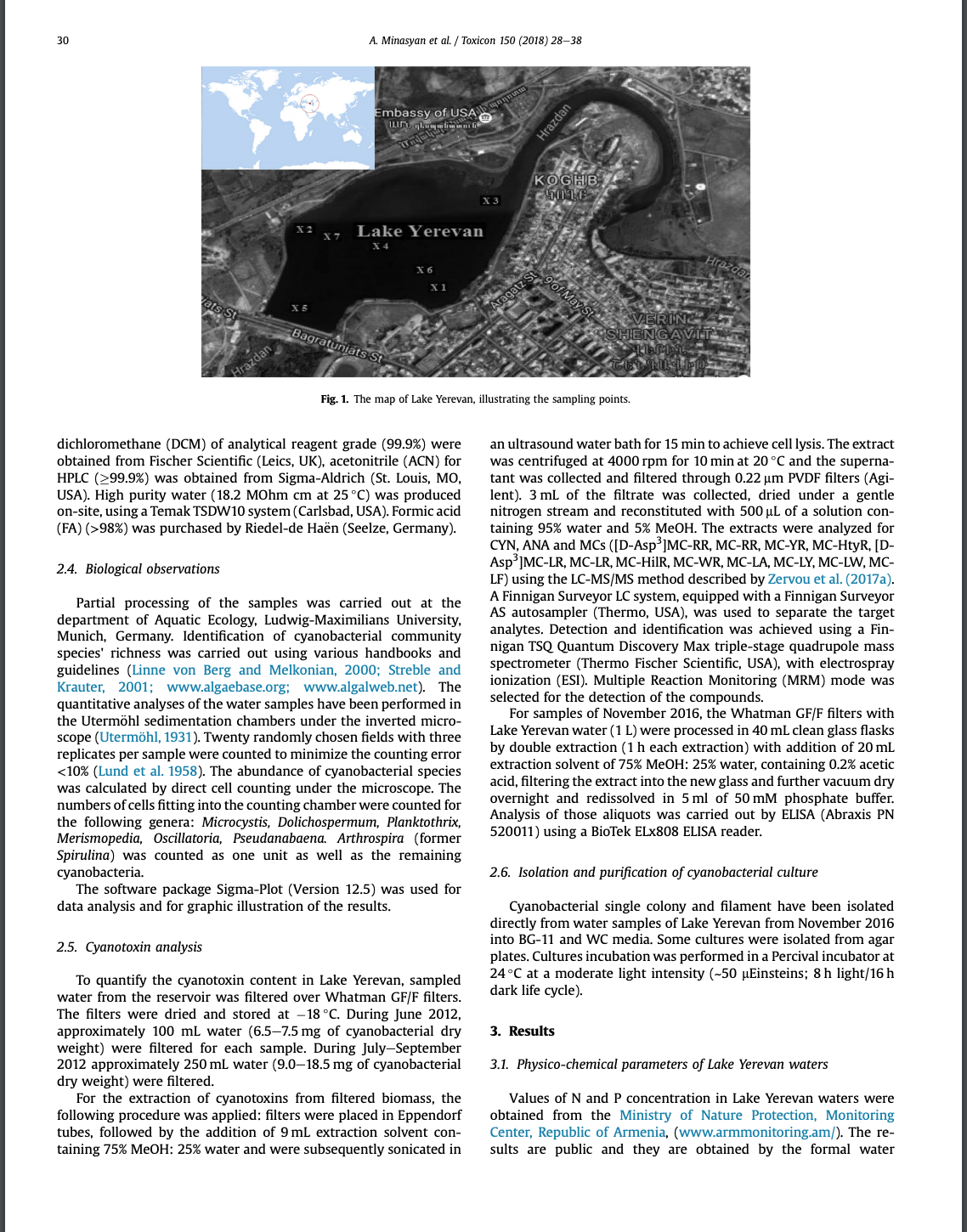Keyword: Cyanotoxins

Buley, R. P., H. E. Correia, A. Abebe, T. B. Issa, and A. E. Wilson. 2021. Predicting microcystin occurrence in freshwater lakes and reservoirs: assessing environmental variables. Inland Waters 11(3):430-444.
Abstract
Determining the environmental conditions that influence the occurrence and concentration of the cyanobacterial toxin microcystin (MC) is a critical step for predicting cases in which the toxin will adversely affect drinking water sources, recreational waterbodies, and other freshwater ecosystems. Although widely studied, little consensus exists regarding the factors that influence MC on a global scale. The objective of this study was to identify the environmental variables most strongly associated with MC concentrations using observational data from lakes and reservoirs around the world while also addressing the substantial proportions of missing values that a large aggregated dataset often involves. A total of 124 studies containing data from an estimated 2040 lakes and reservoirs in 22 countries was used to construct a global dataset. Variables including <35% of non-missing observations were removed prior to analysis. Missing values for the remaining 12 predictors of MC were imputed using an iterative imputation algorithm based on a random forest approach. Variable selection was performed with generalized additive modeling on the complete case and imputed datasets. Models applied to the imputed data produced lower prediction errors than those fit to the complete dataset. Variables of greatest significance to MC concentration included location (longitude–latitude pairs), total nitrogen, turbidity, and pH. Total phosphorus was not found to be a strong predictor of MC. In addition to assisting water resource managers in protecting their waterbodies against MC, the presented methodologies may provide a useful framework for future water quality modeling while accounting for varying proportions of missing data.

Minasyan, A., C. Christophoridis, A. E. Wilson, S.-K. Zervou, T. Kaloudis, and A. Hiskia. 2018. Diversity of cyanobacteria and the presence of cyanotoxins in the epilimnion of Lake Yerevan (Armenia). Toxicon 150:28-38.
Abstract
This paper presents the first report of cyanobacteria and cyanotoxins from the South Caucasus region, in particular from Lake Yerevan (Armenia). Microcystis, Dolichospermum and Planktothrix were the key genera identified during the growing season. A trend of a remarkable increase in cyanobacterial densities was observed from 2012 to 2013 exhibiting bloom formation in June (by Nostoc linckia) with the highest values in June and August 2013, reaching up to 695.9*103 cells mL−1. Seasonal dependence of cyanobacterial density on temperature, and temperature as a driver for cyanobacterial cells growth and development were suggested. Biogenic nutrients were identified as co-drivers determining species richness and dominance, as well as the distribution of phytoplankton in different parts of the reservoir. Cyanotoxin concentrations in the filtered biomass were reported during July 2012 for both stations of the reservoir (left and right bank). Microcystin-RR (MC-RR) was the most abundant and the most frequently observed cyanotoxin. Lower MC-LR concentrations were identified in all samples from both stations, with the highest values observed at the right bank in July 2012. [D-Asp3]MC-RR, MC-YR, MC-HtyR, [D-Asp3]MC-LR, MC-HilR, MC-WR, MC-LY and MC-LW were also identified in trace levels. Anatoxin-a (ANA) was reported in the samples from both stations during August 2012. Cylindrospermopsin (CYN) was present in trace concentrations in samples from both stations during July and in the sample from the left bank during September.